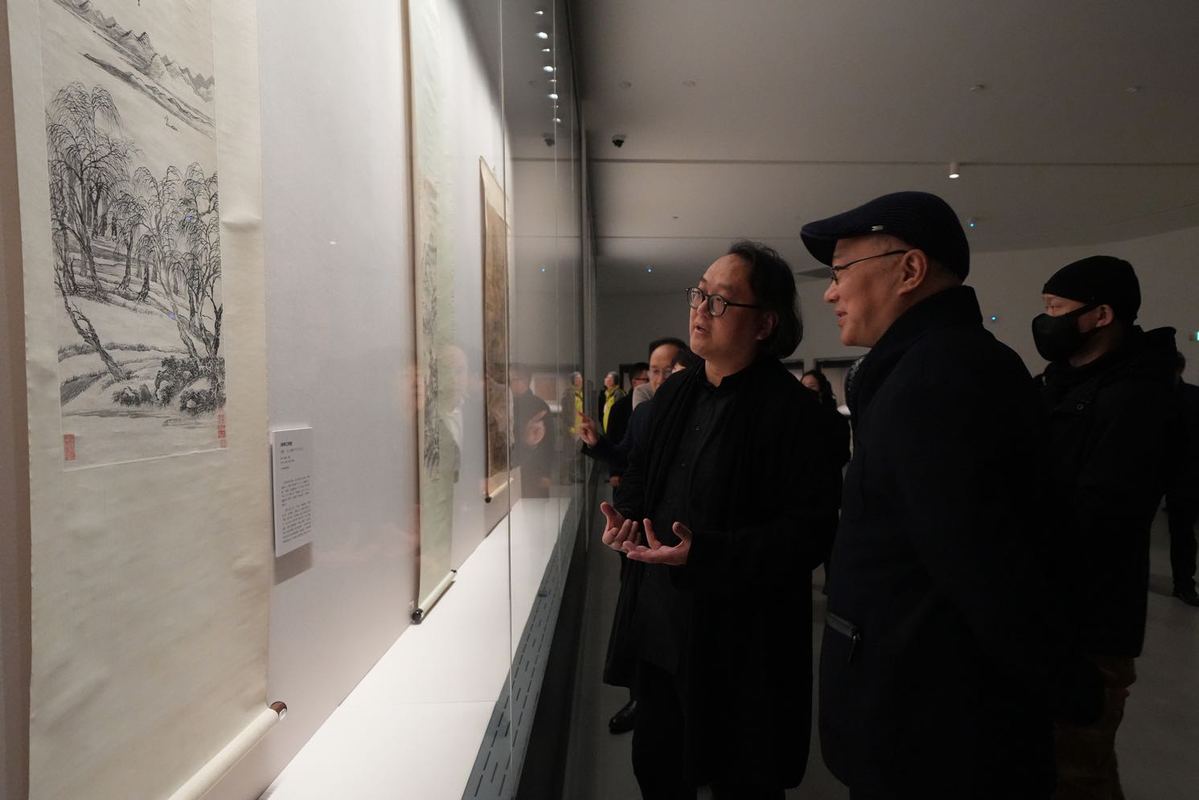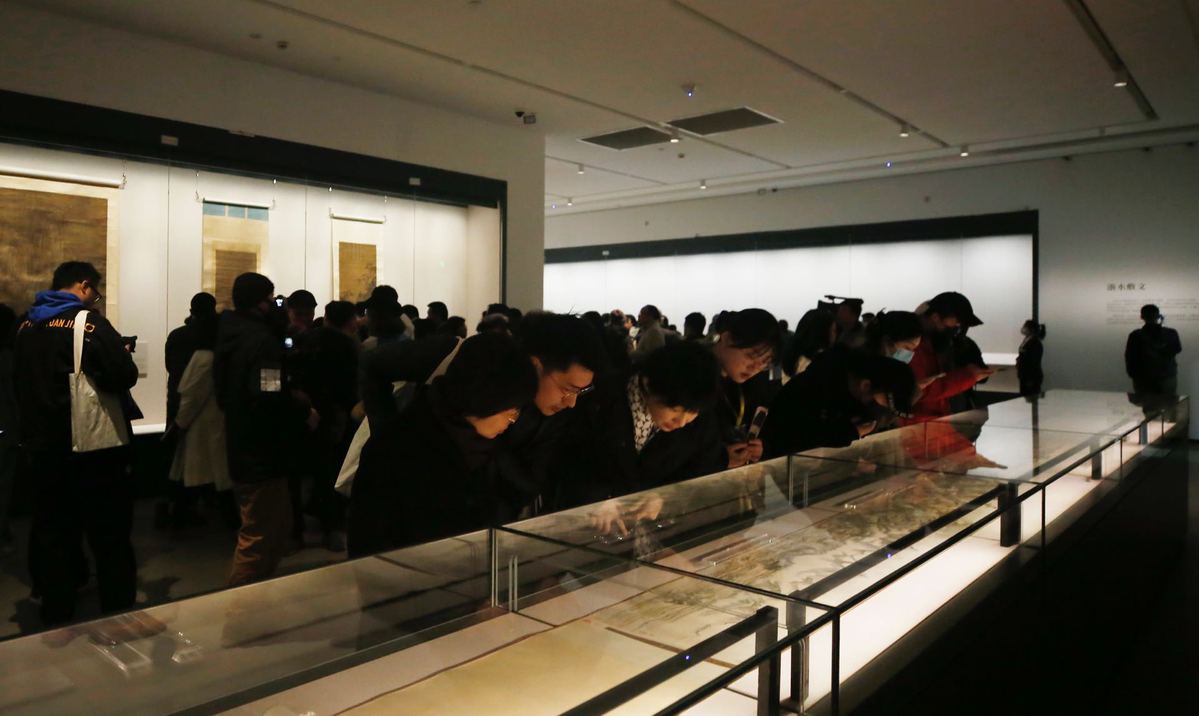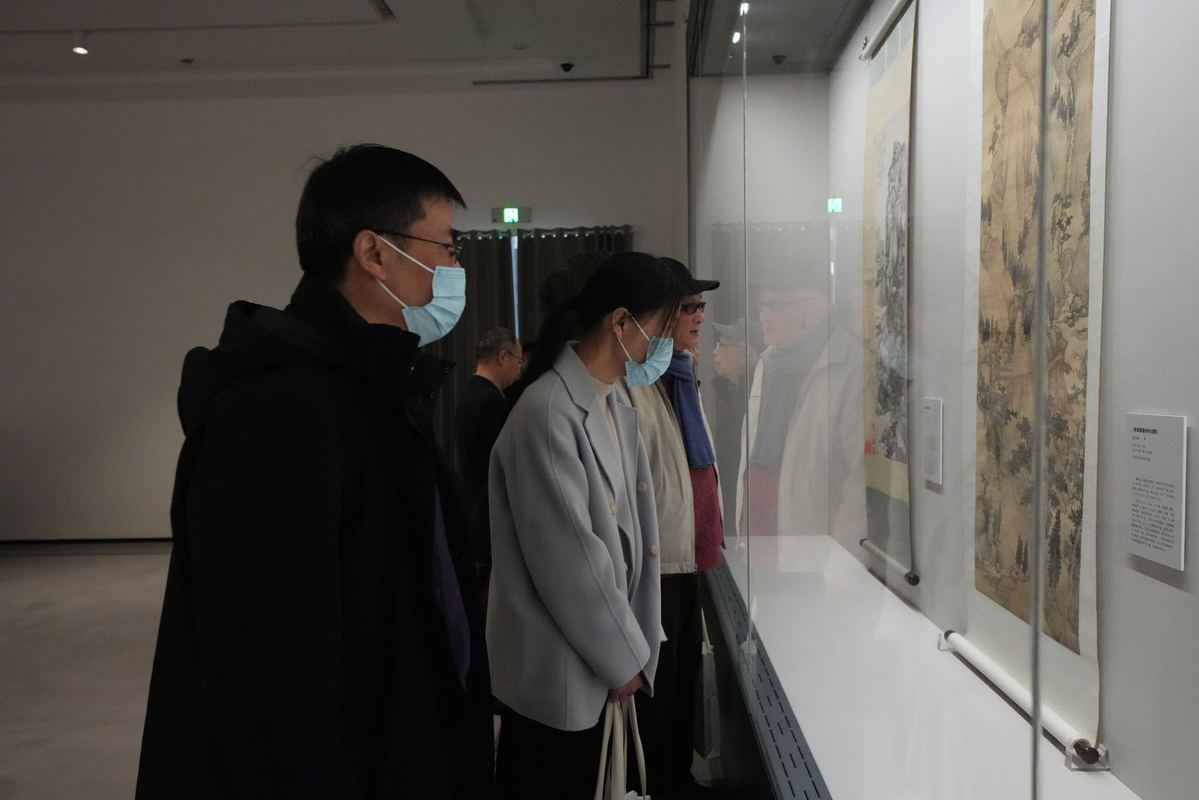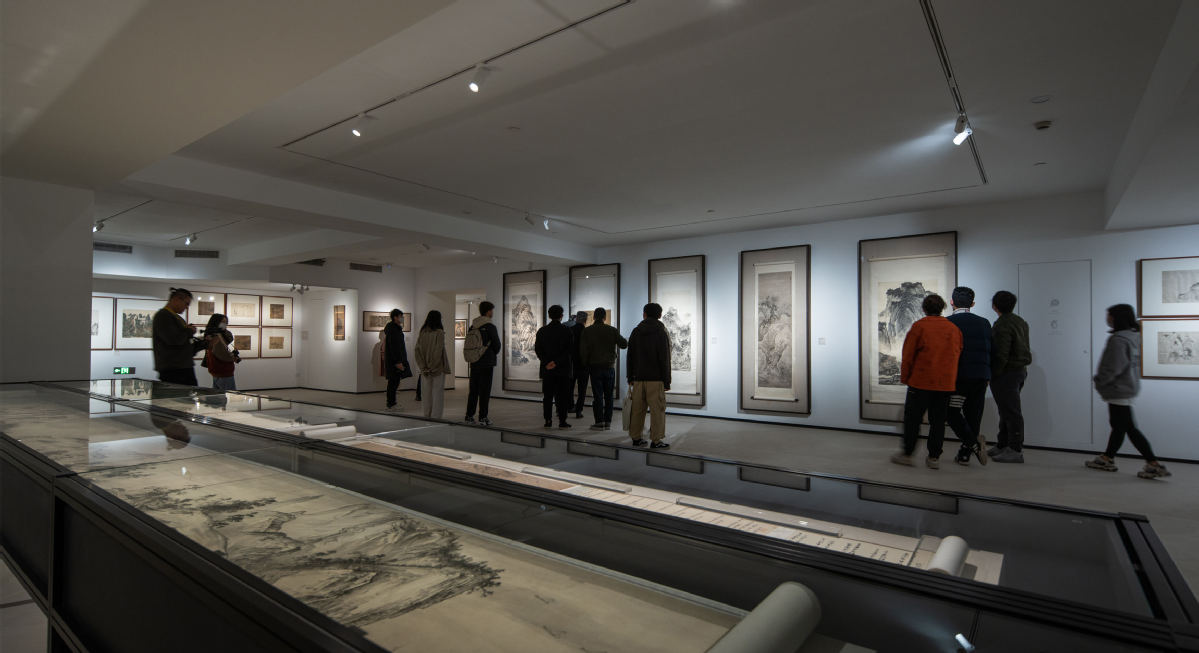



Hangzhou, capital city of Zhejiang province, East China, was the political, economic and cultural center more than 800 years ago, when it served as the capital of the Southern Song Dynasty (1127-1279).
A gathering of prominent intellectuals, scholars, artists and luminaries in other fields elevated the city's culture and art to a new peak, casting a long-standing influence in Chinese history that has lasted to present day.
To mark this booming scene, five exhibitions opened at the art museum of China Academy of Art in Hangzhou on Saturday. Paintings and calligraphic pieces from different periods of time are now on show to showcase the Song era to audiences, and to help them understand how Chinese cultural traditions have been passed on throughout centuries.
The center exhibition of the five is Embrace the Landscape, which brings together 37 classic paintings — 10 of them dated to Song Dynasty (960-1279) — loaned from major museums across the country, including the Palace Museum in Beijing, Tianjin Museum and Zhejiang Provincial Museum. It provides an enactment of the landscapes and social and cultural lives led by people in Southern Song, in Hangzhou, then called Lin'an, and neighboring areas in Jiangnan, a term referring to the lower reaches of the Yangtze River.
Through these objects one will also see the cultural lineage that has been passed on since the Tang Dynasty (618-906) and has been further developed by the elite communities in Song, and how their accomplishments continued to guide and inspire artists in the following dynasties.
Another two exhibitions survey the art of Huang Binhong and Pan Tianshou, respectively, two leading artists of modern China who in their lifetime carried in-depth research of Song art and reformed the face of Chinese ink art to usher it into a new stage of time.








